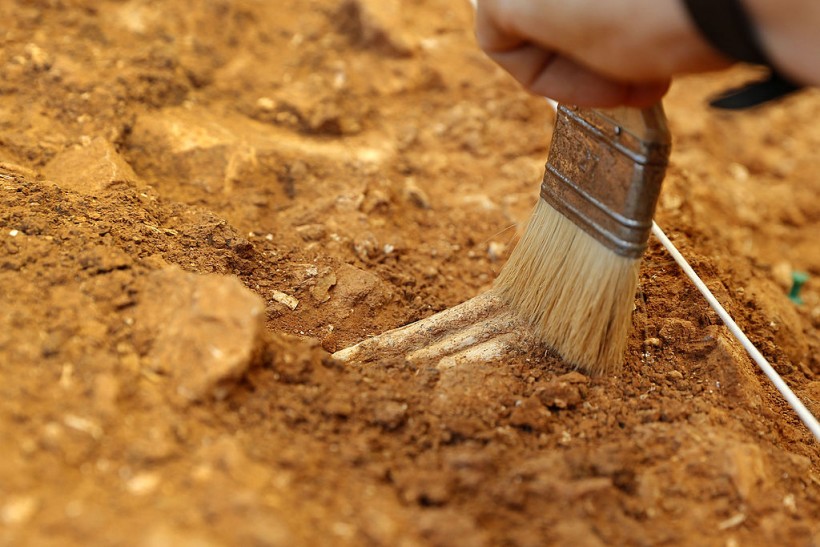A group of scientists from the Smithsonian's National Museum of Natural History and Queens College, CUNY, as well as the National Museums of Kenya, Liverpool John Moores University, and the Cleveland Museum of Natural History, found that early human ancestors butchered hippos and pound plant material along the shores of Africa's Lake Victoria in Kenya roughly 2.9 million years ago.
Archaeologists said that what they discovered could be the oldest stone tools ever found and that someone other than the modern-day humans' Homo ancestors may have crafted them, Live Science reported. The stone tools were found in 2016 in Nyayanga, Kenya, and fit the design of the Oldowan toolkit, a name given to the earliest kinds of stone tools made by human-like hands.

A picture taken on July 11, 2013 shows a paintbrush as workers carry out an excavation of the Gran Dolonia site, at the Archaeological Site of Atapuerca in the Sierra de Atapuerca, province of Burgos. Fossils and stone tools of the earliest known hominids in Europe, dating to between 780,000 and 1 million years ago, were discovered at the Atapuerca's Archaeological site which was added to the UNESCO list of World Heritage Sites in 2000.
Oldest Stone Tools Are Made By Hominids
Whichever hominin lineage created those tools, the newly found artifacts were created between 2.6 and 3 million years ago, based on dated calculations, before being buried for ages in silt and sand. Among the 1,776 fossilized animal bones that indicated traces of butchery, 330 objects were discovered. Prior to this, the oldest known Oldowan implements were 2.6 million years old.
The age of the newfound tools is being under study, but their formation correlates with a time when progenitors of Homo sapiens walked alongside other early humans, signifying a significant technical milestone for its makers.
Paleoanthropologist Rick Potts from the Smithsonian Institute's National Museum of Natural History said in a press release that these tools can crush better than an elephant's mortal and cut better than the canine of a lion.
He added that Oldowan technology was like suddenly growing a brand-new set of fangs outside the body that gave hominids access to a new range of foods on the African savannah.
They found hammerstones and sharp-edged flakes hammered from stone cores, as well as rib, shin, and scapular bone fragments from hoofed ruminant animals known as bovids (such as antelope) and hippopotamids.
These instruments were so successful that the technology expanded over Africa over millennia. Oldowan sites dating back to 2 million years have been discovered from northern to southern Africa, in both grassland and woodland settings.
READ ALSO: Stone Tools Discovered in Poland Cave 50 Years Ago Reveal Clues Behind Early Humans Who Made Them
Microscopic Analyses Reveal How the Stone Tools Were Used
According to EurekAlert!, researchers also performed microscopic analyses of wear patterns on stone tools to establish how they were used. Also, they analyzed any bones that showed probable cut marks or other types of damage caused by stone tools.
At least three individual hippos could be found on the site. Two of these partial skeletons had bones that had been butchered. The scientists discovered a significant cut mark on one hippo's rib fragment and four small, parallel incisions on another's shin bone.
Furthermore, they also discovered antelope bones with indications of hominins slicing meat with stone flakes or being smashed by hammerstones to obtain marrow.
The wear patterns on 30 of the stone tools discovered at the site revealed that they were used to hack, scrape, and pound both animals and vegetation.
These stone toolmakers were believed to have eaten everything uncooked, maybe grinding the flesh into something resembling hippo tartare to make it simpler to chew, given that fire would not be harnessed by hominins for another 2 million years.
RELATED ARTICLE: Oldest Stone Tools Discovered in Kenya, Pushing the Technology Back Some 700,000 Years
Check out more news and information on Archaeology in Science Times.














